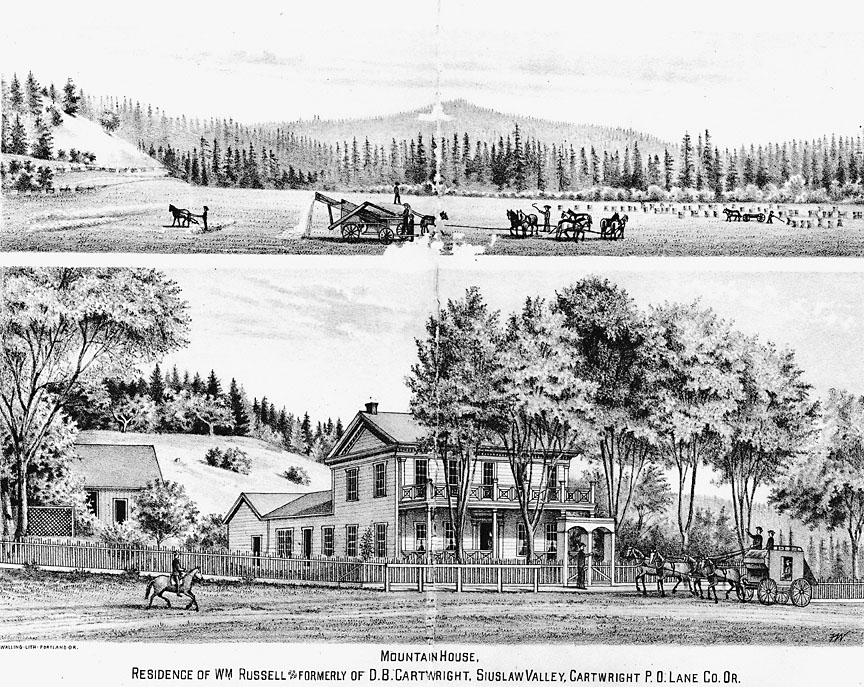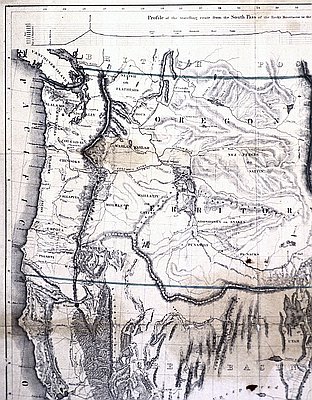- Catalog No. —
- OrHi 33931
- Date —
- 1884
- Era —
- 1881-1920 (Industrialization and Progressive Reform)
- Themes —
- Architecture and Historic Preservation, Oregon Trail and Resettlement, Transportation and Communication
- Credits —
- Oregon Historical Society
- Regions —
- Oregon Trail Willamette Basin
- Author —
- Albert G. Walling
Cartwright House (Mountain House)
The lithograph above is derived from a sketch of Mountain House, a landmark farm and stage stop along the California-Oregon Trail. The house was built in 1853-1855 by Darius B. Cartwright near the present-day community of Lorane in Lane County.
Mountain House was located along what is known today as Territorial Road, a name referring to its history as the successor to an earlier trail long used by Kalapuyan, Molala and other Indians, and later by Euro American trappers, through the Willamette Valley. The route traced the western edge of the valley, skirting through the hills southwest of Eugene toward the Umpqua River Valley. During the late 1860s Mountain House was a stop along the route of the California & Oregon Stage Company between Portland and Sacramento. The road diminished in importance after the railroad was completed south from Portland to Roseburg in 1874.
Darius B. Cartwright was born in New York State in 1814 and later lived in Illinois, where he married and raised a family. The Cartwrights came to Oregon in 1853, settled on 530 acres of land along the California-Oregon Trail, and began construction of the house. The house was sold in 1866 to William Russell, who had married the Cartwrights’ daughter Katie. The Russells began operating it as the Mountain House, and in 1871 a post office named Cartwrights was established there also.
The house was built between 1853 and 1855 in a very simple Greek Revival style, with a symmetrical façade, pedimented end gables, a central entrance and hallway, capped pilasters at each corner, and a dentil course below the eaves. According to vernacular architecture historian Phil Dole, “every element of the two-story frame was hand-hewn cedar, massive in size. Studs in the wall were over seven inches square; the floor joists were ten inches square. The 22-foot-tall corner posts were hewn to an L-shaped section so as not to project into the room. This later technical detail, long practiced in Virginia, is one usually found in an Oregon hewn frame house.” Mountain House survived in family hands until 1952. It was documented in the Historic American Buildings Survey of 1934, and survived until it was demolished and burned in 1973.
Further Reading:
Harpham, Josephine Evans. Doorways into History. Eugene, Oreg., 1966.
Dole, Phil. “Farmhouses and Barns of the Willamette Valley,” in Space, Style and Structure: Building in Northwest America, 78-140. Portland, Oreg., 1974.
Written by Richard Engeman, © Oregon Historical Society, 2005.

